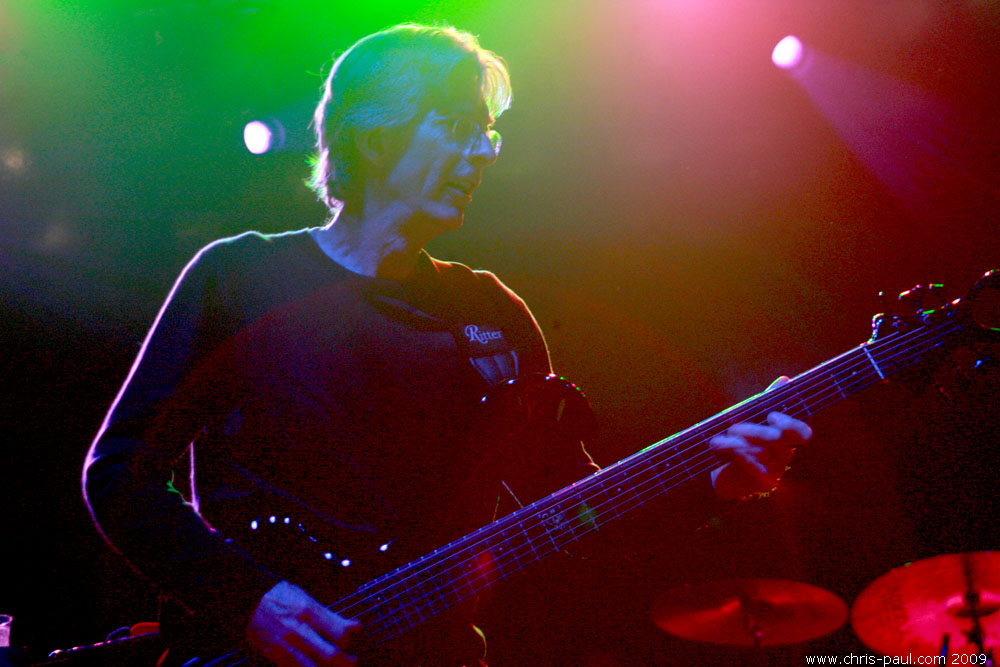
Photo by Chris Paul
During the first set of the Furthur show at Hammerstein Ballroom, the second gig of a two-night run, rhythm guitarist Bobby Weir was beset by technical difficulties. I could hear whispers in the crowd that Weir had experienced similar problems the previous evening. Poor ol’ Ace. Some things never change.
But on a more profound level than Weir’s never-ending battles with his music rack, things have changed in Deadland. Furthur is the most recent iteration in the post Grateful-Dead universe, where various musical constellations (Ratdog, Phil and Friends, “The Dead”) have been swirling around since lead guitarist Jerry Garcia, first among equals in the Grateful Dead, died in 1995.
Furthur in September got rolling with three shows at the Fox Theater in Oakland, Calif. (followed by an abbreviated show in Fairfax, Calif. in late November). The shows at Hammerstein kicked off a short tour of the East Coast, with stops in New York City, Asbury Park, NJ and Wallingford, CT. (An extensive winter tour is scheduled for February and March.)
Perhaps unlike previous reconfigurations of the Dead, a great deal of anticipation accompanied the debut of Furthur. The band features newbies Joe Russo (half of the Benevento/Russo Duo), on drums, and John Kadlecik on lead guitar. Jay Lane, who plays drums for Ratdog, is on percussion and Jeff Cimenti, also a longtime member of Ratdog, plays piano (both acoustic and electric).
Bassist Phil Lesh and Bobby apparently poached Kadlecik from Dark Star Orchestra, a Dead cover band in which Kadlecik plays the role of Garcia. Bringing Kadlecik on board is, of course, an embrace of both the old and the new. While Kadlecik shares Garcia’s near-exact tone, subtle style and reedy, crinkly voice, he also possesses a certain playfulness (think Garcia bopping around the stage circa early 1970s) that’s added a fresh element to the proceedings. Russo, it must be said, is a veritable pistol on drums.
But this latest chapter in the Book of the Dead started off choppy and uneven. The first set was an unmitigated mess musically. “Feel like a Stranger,” the Dead’s ode to discodom, opened the set on a rather tentative note. However, “Stranger” was followed by a rollicking “Deal,” which displayed the Electric-Dixieland sound that the Grateful Dead were famous for.
“Crazy Fingers,” with inspired leads from Kadlecik, was arguably the highlight of the first set, which soon devolved into a muddy morass. Weir mangled the lyrics of Bob Dylan’s “Stuck Inside of Mobile with the Memphis Blues Again,” and altogether botched “Birdsong,” the Grateful Dead’s homage to Janis Joplin, which was soon aborted.
The traffic on stage, which was rolling right along during “Deal” and “Crazy Fingers,” started to bottleneck, and the sound on Kadlecik’s guitar faded in and out of the soundboard for the rest of the set.
The band tried to salvage the set by inserting the crowd favorite “Mississippi Half Step” after “Memphis.” But “Half Step” sounded amorphous and the band seemed confused as to whom should take what leads, both vocal and instrumental. The set closed with an adequately played “Good Lovin’” and then the head-scratching among fans started immediately.
(I read some of the reviews about this show on Philzone.com and found many of them to be more personal in nature. Sheesh – thank heaven social media wasn’t around when Garcia was alive.)
The band’s amazing potential crystallized during the second half of the set. A haunting “Uncle John’s Band” was followed by a blistering version of “Unbroken Chain.” During “Unbroken Chain,” the band clicked on all cylinders: Lesh dropping his patented bombs, Weir laying down snaky rhythms, both drummers providing steady backbeats and Kadlecik delivering the most gorgeous leads of the evening. With the audience now locked in, the band reached a crescendo with the tasty combination of “Satisfaction” into “Let it Grow,” which was capped off with a snap-crackle-and-pop version of “Sugar Magnolia.” For a bit of a musical dessert, the band closed with “Sunshine Daydream.”
At the end of the show, the naysayers seemed like they were in the minority. Indeed, the problems manifest in the first set simply reflected the growing pains of a new baby, but one that, when you consider the gene pool, already seems to be moving very quickly from a crawl to a walk. And If history is any indication, this band will be strutting in no time.


No Comments comments associated with this post